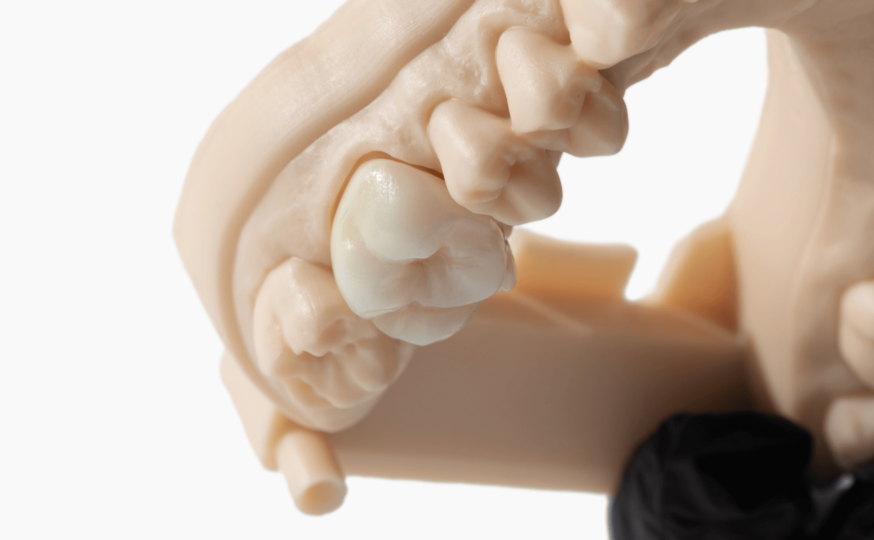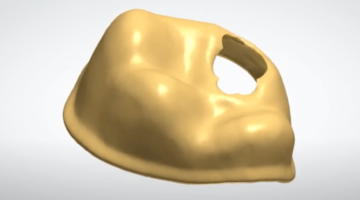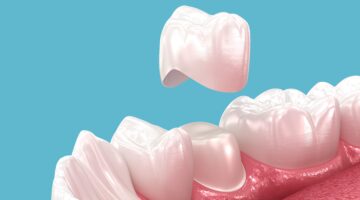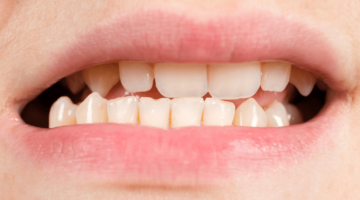Zirconia crowns are a type of dental crown made from a strong and biocompatible material called zirconium oxide. They are becoming increasingly popular among dentists due to their advantages over other crown materials, such as porcelain and metal alloys. In this article, we will explore the topic of zirconia restorations and cover everything you need to know about them as a dentist.
The history of Zirconia restorations
It’s been a little over 230 years since German chemist Martin Heinrich Klaproth discovered zirconium while analyzing the gemstone jacinth, and we have come a long way in understanding the element and finding uses for it. It wasn’t until the 1960s that zirconia started appearing in medical applications, with the metal being used in hip-joint replacements. During that same time, dentists experimented with zirconia, but the material lacked the proper strength and aesthetics.
Then in the 1990s zirconia started becoming a more viable option for dentists with the development of Yttria-stabilized tetragonal zirconia polycrystal (Y-TZP), a much stronger and more biocompatible form of zirconia. It was also at this time that CAD/CAM technology emerged, allowing for the precise milling required for zirconia crowns.
In the early 2000s zirconia crowns started to gain popularity throughout dentistry, especially for the less visible teeth in the back of the mouth. Porcelain-fused-to-zirconia crowns (PFZ) combined the aesthetic value of porcelain with the strength of zirconia, making them suitable for front-of-the-mouth restorations.
Continuous advancements in material science and technology have led to stronger and more translucent zirconia restorations, monocrystalline zirconia for greater strength and durability, and the amazing precision and efficiency that come with digitally designed and milled zirconia restorations.
Today, zirconia crowns are a popular choice among dentists for their durability, biocompatibility, strength, and the minimal tooth reduction required during installation.
What is zirconia material?
Zirconia, also known as zirconium dioxide (ZrO2), is a ceramic material made of zirconium, a metallic element, and oxygen. It has been harnessed by dentistry for use in crowns, bridges, implants, and veneers due to its strength, aesthetics, and biocompatibility.
Dentists are able to make extensive use of zirconia in part thanks to the advancements in CAD/CAM technology. During the initial visit by the patient, the dentist is able to take digital impressions of the prepared tooth. Then the impressions are sent to the lab, where a tech uses CAD software to design the crown before sending the specs to a dental milling machine, which then precisely fabricates the crown from zirconia.
Zirconia crown prep vs. other ceramic restorations
The differences between zirconia crowns and other ceramic restorations start back in preparation. Let’s look at each step involved and compare zirconia crown preparations to other methods.
Tooth removal
Zirconia: Requires minimal tooth removal due to its strength. It is suitable for situations where tooth structure preservation is a priority.
Other ceramics: The amount of removal varies depending on the material. Lithium disilicate (eMax) needs slightly more than zirconia due to its lower strength, while feldspar (porcelain) might require similar or even more removal.
Preparation technique
Zirconia: Similar to other ceramic crowns, involving enamel and dentin reduction to create space for the crown. It may involve chamfer or shoulder margins depending on the case.
Other ceramics: Similar techniques apply, but specific considerations might exist. Lithium disilicate may require specific bur designs due to its material properties and feldspar might require additional attention to margin integrity due to its potential for chipping.
Impression taking
All ceramics are similar, requiring highly accurate impressions (physical or digital) of the prepared tooth and surrounding area.
Lab work
Zirconia: Often utilizes CAD/CAM technology for precise milling from zirconia blanks. It can be monolithic (solid) or layered with porcelain.
Other ceramics: Lab procedures vary depending on the material. Lithium disilicate might involve pressing or milling techniques, while feldspar typically involves pressing.
Overall
Zirconia: Generally requires less tooth removal due to its strength. The lab process and construction benefits from advanced technology.
Other ceramics: Require slightly more tooth removal depending on the material. Lab procedures vary, with some potentially being less accurate than zirconia.
Zirconia crown cementation
After prepping the tooth and ensuring a perfect fit, the dentist secures the precisely designed zirconia crown onto it. They clean and condition the tooth, apply specific cement to both crown and tooth, carefully seat the crown, remove excess cement, and light-cure the bond. This crucial step, requiring special techniques for zirconia cementation, ensures a strong, aesthetically pleasing, and functionally optimal restoration.
Types of zirconia restorations
There are three main types of zirconia restoration, each offering its own advantages. Let’s take a look at each.
Layered zirconia restorations
Layered zirconia restorations combine the best of both worlds: strength and aesthetics. A solid zirconia framework provides exceptional durability, especially for back teeth, while a thin layer of porcelain mimics the translucency and color of natural teeth, making them ideal for front teeth, creating what is known as a porcelain fused to zirconia crown (PFZ). This layering process requires skilled technicians and often involves digital design and milling for precise results. While potentially slightly more expensive than other ceramic options, layered zirconia restorations offer a strong, natural-looking, and biocompatible solution for long-lasting smile improvements.
Monolithic zirconia restorations
Monolithic zirconia restorations are exactly what they sound like—crowns crafted from only one material. Made entirely from solid zirconia, they boast exceptional strength and durability, making them ideal for back teeth that endure heavy chewing forces. By forgoing a delicate layer of porcelain, monolithic zirconia crowns minimize chipping concerns and simplify the process. While their natural zirconia color might not perfectly match front teeth, their impressive strength, biocompatibility, and minimal tooth removal requirements make them a popular choice for function and long-lasting restorations.
High translucent zirconia
High translucent or aesthetic zirconia crowns are the ultimate in modern tooth replacement innovation. They combine the exceptional strength of standard zirconia with a special formulation that lets more light through, achieving a level of translucency that closely mimics natural teeth. This makes them ideal for enhancing the aesthetics of front teeth, allowing natural light to play beautifully across the restoration. While not quite as strong as solid zirconia, they’re still highly durable and offer excellent biocompatibility, minimal tooth removal, and long-lasting, bright smiles.



